Kazuo Hara
出生 : 1945-06-08, Ube, Yamaguchi, Japan
略歴
Kazuo Hara (原一男 Hara Kazuo, born 8 June 1945) is a Japanese documentary film director. After dropping out of university to work at a special education school, he made his 1972 debut work Goodbye CP about a group of individuals with cerebral palsy. He won the award for Best Director at the 12th Hochi Film Award and at the 9th Yokohama Film Festival for The Emperor's Naked Army Marches On. That film also earned him the Directors Guild of Japan New Directors Award. In 2017 he released the documentary Sennan Asbestos Disaster which received the 2017 Audience Award at the Tokyo Filmex International Film Festival and the 2017 BIFF Mecenat Award at the Busan International Film Festival. His documentary works often depict people who push against the boundaries of propriety and obedience in Japanese society.

Director
After years of dumping industrial wastes from the factory to the ocean, Chisso Chemical Corporation contaminated the area of a small Japanese fishing village with excessive amounts of methylmercury. This highly toxic chemical bioaccumulated in fishes of the local water, which when consumed by the local populace resulted in mercury poisoning. In 1977, Minamata disease certification criteria was set by a strange method that tried not to recognize the rights of environmental disease patients. However, an Osaka court won the case for some patients because of a newly developed theory by medical doctors’ recent experiments and proofs. For decades, these patients struggled within the Japanese judicial system for their rights to receive compensation as victims of environmental disease. Those different aspects of these patients’ lives have been filmed by director Hara for the last 15 years, inspired by the late director Tsuchimoto’s documentary MINAMATA: THE VICTIMS AND THEIR WORLD (1971).

Cinematography
令和元年、夏。山本太郎が代表である「れいわ新選組」から、個性豊かな10名の候補者が熱き想いを胸に参議院選挙に出馬した。日本の社会を変えるために彼らが挑んだその戦いにカメラを向け、それぞれの候補が展開する活動を追いかけていく

Producer
令和元年、夏。山本太郎が代表である「れいわ新選組」から、個性豊かな10名の候補者が熱き想いを胸に参議院選挙に出馬した。日本の社会を変えるために彼らが挑んだその戦いにカメラを向け、それぞれの候補が展開する活動を追いかけていく

Director of Photography
令和元年、夏。山本太郎が代表である「れいわ新選組」から、個性豊かな10名の候補者が熱き想いを胸に参議院選挙に出馬した。日本の社会を変えるために彼らが挑んだその戦いにカメラを向け、それぞれの候補が展開する活動を追いかけていく

Director
令和元年、夏。山本太郎が代表である「れいわ新選組」から、個性豊かな10名の候補者が熱き想いを胸に参議院選挙に出馬した。日本の社会を変えるために彼らが挑んだその戦いにカメラを向け、それぞれの候補が展開する活動を追いかけていく
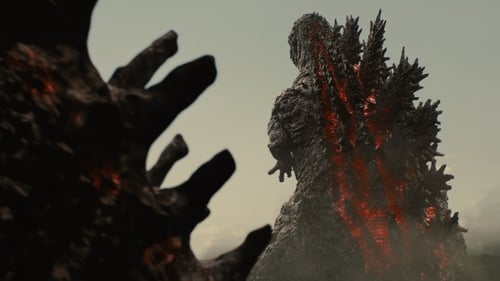
Biology Professor
ゴジラシリーズ第29作。総監督・脚本に庵野秀明、監督・特技監督に樋口真嗣を迎え製作された完全新作。 東京湾アクアトンネルが崩落する事故が発生。首相官邸での緊急会議で内閣官房副長官・矢口蘭堂(長谷川博己)が、海中に潜む謎の生物が事故を起こした可能性を指摘する。その後、海上に巨大不明生物が出現。さらには蒲田に上陸し、街を破壊しながら突進していく。政府の緊急対策本部は自衛隊に対し防衛出動命令を下し、“ゴジラ”と名付けられた巨大不明生物に立ち向かうが……。

Director of Photography
This film is about a lawsuit seeking state compensation for asbestos-related damage in the Sennan area of Osaka. Filmmaker Hara Kazuo records the eight-year struggle of the plaintiffs and their lawyers. A dogged and dramatic depiction of their intense battle.

Director
This film is about a lawsuit seeking state compensation for asbestos-related damage in the Sennan area of Osaka. Filmmaker Hara Kazuo records the eight-year struggle of the plaintiffs and their lawyers. A dogged and dramatic depiction of their intense battle.

Executive Producer
Sayaka ONO created a painful and deeply moving portrayal of her own vulnerable soul, based on the tense relationship with her parents. Left alone for a entire year at the age of five, she had to grow up with the constant fear of getting abandoned again. Her difficult childhood and youth resulted in depression, frustration and anger, that she now shares with the world.

Director
When her husband is hospitalized with tuberculosis, Chika has a series of three relationships: with a teacher in her hometown, with a student in Tokyo, and with an aging gangster.

himself
Devotion investigates the extremely complex and heirarchical relationships among a committed group of Japanese filmmakers who dedicated up to 30 years of their lives making films for one man-Ogawa Shinsuke. Members of Ogawa Pro filmed the student movement of the late 60's; the fight by farmers to save their land from government confiscaton for the Narita airport at Sanrizuka; and the village life of a small farming community, Magino Village, in northern Japan. These heartbreaking and sometimes funny stories have never been told on film before. Rare footage, stills, and diaries with interviews with Oshima Nagisa, Hara Kazuo and Robert Kramer make this historical inquiry visually exciting as well as valuable.

Director
A documentary following the lives of people in Mishima, a small island off the coast of Hagi City, Yamaguchi Prefecture.
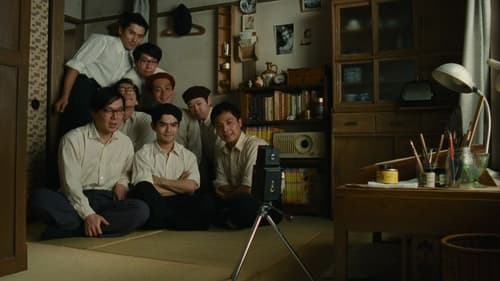
Kato
手塚治虫とともにトキワ荘に暮らす、寺田ヒロオ。手塚が越した後、安孫子素雄や藤本弘ら多くの漫画家を夢見る若者たちがトキワ荘に住みつくようになる。早くから住人だった寺田は、よき相談役で兄貴分と慕われるが、後から来た若者たちが次々に売れていく中、時代に取り残されていく。しかし彼はねたみもせず、静かにみんなを応援する。

Co-Director
A group of Japanese tourists try to forget their pasts and find themselves in India.

Director of Photography
原一男監督が、平成4年5月にガンで亡くなった小説家・井上光晴の晩年の5年間を追ったドキュメンタリー。映画は、彼が文学を教える生徒や、埴谷雄高、瀬戸内寂聴らの証言を通して、井上光晴の文学活動を捉えるとともに、撮影開始直後に発覚したガンと闘う姿を生々しく撮り続ける。

Director
原一男監督が、平成4年5月にガンで亡くなった小説家・井上光晴の晩年の5年間を追ったドキュメンタリー。映画は、彼が文学を教える生徒や、埴谷雄高、瀬戸内寂聴らの証言を通して、井上光晴の文学活動を捉えるとともに、撮影開始直後に発覚したガンと闘う姿を生々しく撮り続ける。

Co-Director
Toyoichi Otomo suffers from psychological and spiritual troubles after a horrific industrial accident. He lives with his elderly mother and wife near Mt. Aso in rural Kyushu. He seeks solace in a small religious group run by Buddhist nun Chishu-bo who claims to be the 68th descendant of famed 11th century poet Izumi Shikibu. The members of her sect regard her as a living saint. Yet instead of balming his soul, she riles his libido by playing a sexual cat-and-mouse game with the fragile Toyoichi. When she does bed him, it leads to a miracle healing -- followed by a terrible calamity.
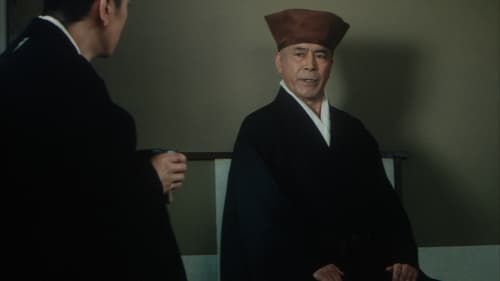
Co-Director
Years after the death of legendary tea master Rikyu, his disciple Honkakubo attempts to resolve the mystery of the master's death.
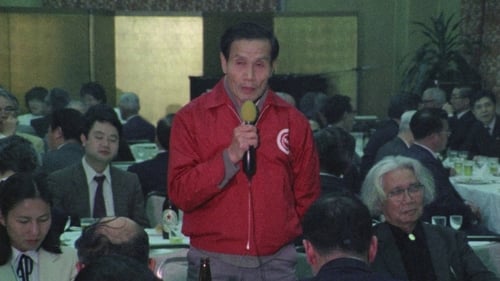
Director of Photography
神戸市で妻とバッテリー商を営む奥崎謙三は、自らを「神軍平等兵」と名乗り、「神軍」の旗たなびく車に乗って日本列島を疾駆する。ある日、自身がかつて所属していた独立工兵第36連隊で、終戦後23日も経ってから敵前逃亡の罪で2人の兵士が処刑されていたことを知った奥崎は、その遺族らとともに真相究明に乗り出す。時には暴力も辞さない奥崎の執拗な追及により、元兵士たちの口から事件の驚くべき真実と戦争の実態が明かされていく。

Director
神戸市で妻とバッテリー商を営む奥崎謙三は、自らを「神軍平等兵」と名乗り、「神軍」の旗たなびく車に乗って日本列島を疾駆する。ある日、自身がかつて所属していた独立工兵第36連隊で、終戦後23日も経ってから敵前逃亡の罪で2人の兵士が処刑されていたことを知った奥崎は、その遺族らとともに真相究明に乗り出す。時には暴力も辞さない奥崎の執拗な追及により、元兵士たちの口から事件の驚くべき真実と戦争の実態が明かされていく。

Co-Director
太平洋戦争末期に実際に起こった米軍捕虜に対する生体解剖事件を描いた遠藤周作の同名小説を、社会派・熊井啓監督が映画化した問題作。敗色も濃厚となった昭和20年5月。九州のF市にも毎晩のように米軍機による空襲が繰り返されていた。医学部の研究生、勝呂と戸田の二人は物資も薬品も揃わぬ状況下でなかば投げやりな毎日を送っていた。
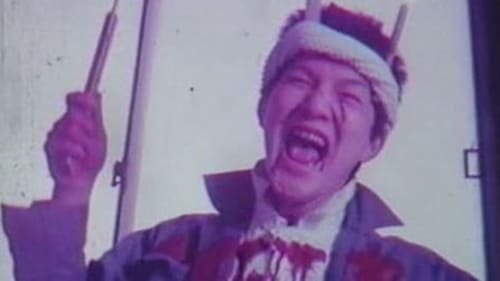
Director of Photography
Pig Chicken Suicide is a veritable assault on the senses, mixing violent images of animal slaughter, racial strife, and surrealism to tell the story of two Koreans living in Japan whose love is destroyed due to overwhelming racial discrimination. In explicit abattoir photos and much symbolism, Matsui tells about the struggles of ethnic Koreans in Japan. A butcher's love affair and his relationship with the animals he kills frame the story.

Assistant Director
A couple originally from Okinawa run an inexpensive restaurant in Kobe, with their grade-school daughter, Fuuchan. The movie depicts the warm interaction between her and adults that grew up with the rough history of Okinawa and discrimination from the mainland. Shots partly on location at beach of Itoman, Yogi Park and Hateruma Island. This is the movie version of the well-known novel by Kenjiro Haitani.

Director of Photography
Pinku from 1975.

Director of Photography
Pinku from 1975.

Director of Photography
Rogue and vagabond Gonbee pretends himself as a boss of Yokohama-city. He has his follower Senkichi perform, and tries to make the skin flick. One magazine applies for coverage to him. But in the coverage, he stole the purse from the editor in chief Murata. Murata desperately raped his woman colleague, and what's more he plans to outrageous action...

Himself
In 1972, Miyuki tells her ex-lover Kazuo that she's going to Okinawa with their son. Kazuo decides to film her. He narrates his visits to her there: first while her flatmate is Sugako, a woman Miyuki is attracted to; then, while she works at a bar and is with Paul, an African-American soldier. Once, Kazuo brings his girlfriend, Sachiko. We see Miyuki with her son, with other bar girls, and with Sachiko. Miyuki, pregnant, returns to Tokyo and delivers a mixed-race child on her own with Kazuo and Sachiko filming. She joins a women's commune, talks about possibilities, enjoys motherhood, and is uninterested in a traditional family. Does the filmmaker have a point of view?

Director of Photography
In 1972, Miyuki tells her ex-lover Kazuo that she's going to Okinawa with their son. Kazuo decides to film her. He narrates his visits to her there: first while her flatmate is Sugako, a woman Miyuki is attracted to; then, while she works at a bar and is with Paul, an African-American soldier. Once, Kazuo brings his girlfriend, Sachiko. We see Miyuki with her son, with other bar girls, and with Sachiko. Miyuki, pregnant, returns to Tokyo and delivers a mixed-race child on her own with Kazuo and Sachiko filming. She joins a women's commune, talks about possibilities, enjoys motherhood, and is uninterested in a traditional family. Does the filmmaker have a point of view?

Director
In 1972, Miyuki tells her ex-lover Kazuo that she's going to Okinawa with their son. Kazuo decides to film her. He narrates his visits to her there: first while her flatmate is Sugako, a woman Miyuki is attracted to; then, while she works at a bar and is with Paul, an African-American soldier. Once, Kazuo brings his girlfriend, Sachiko. We see Miyuki with her son, with other bar girls, and with Sachiko. Miyuki, pregnant, returns to Tokyo and delivers a mixed-race child on her own with Kazuo and Sachiko filming. She joins a women's commune, talks about possibilities, enjoys motherhood, and is uninterested in a traditional family. Does the filmmaker have a point of view?

Director of Photography
Kazuo Hara follows the lives and activities of Yokota Hiroshi and Yokozuka Koichi, members of an activist group made up of people with cerebral palsy.

Director
Kazuo Hara follows the lives and activities of Yokota Hiroshi and Yokozuka Koichi, members of an activist group made up of people with cerebral palsy.









